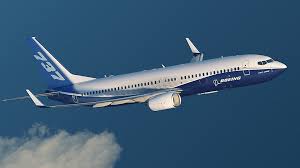Understanding the Engine of the Boeing 737-800: A Deep Dive
The Boeing 737-800 is one of the most widely used commercial aircraft in the world, known for its efficiency, reliability, and versatility. A crucial component that makes this aircraft so successful is its powerful and fuel-efficient engine. In this blog post, we’ll take a closer look at the engine that powers the Boeing 737-800, exploring its specifications, technology, and impact on the aircraft’s performance.
The Engine: CFM56-7B
The Boeing 737-800 is powered by the CFM56-7B engine, manufactured by CFM International, a joint venture between General Electric (GE) of the United States and Safran Aircraft Engines of France. The CFM56-7B is part of the widely used CFM56 engine family, which has powered various Boeing and Airbus aircraft for decades.
Key Specifications of the CFM56-7B Engine:
- Type: High-bypass turbofan
- Thrust Range: 19,500 – 27,300 pounds of thrust
- Bypass Ratio: Approximately 5.5:1
- Fan Diameter: 61 inches (155 cm)
- Compressor Stages:
- 1-stage fan
- 3-stage low-pressure compressor (LPC)
- 9-stage high-pressure compressor (HPC)
- Turbine Stages:
- 1-stage high-pressure turbine (HPT)
- 4-stage low-pressure turbine (LPT)
- Overall Pressure Ratio: Up to 32:1
Performance and Efficiency
The CFM56-7B engine was designed to offer high reliability, fuel efficiency, and lower maintenance costs. Some of the features that contribute to its outstanding performance include:
1. Fuel Efficiency
The CFM56-7B engine is more fuel-efficient than previous models, thanks to its advanced aerodynamics and materials that optimize airflow and reduce fuel consumption. This is crucial for airlines looking to cut operational costs and reduce carbon emissions.
2. Reliability and Durability
With over 200 million flight hours logged, the CFM56-7B is known for its exceptional durability and reliability. Airlines benefit from lower maintenance costs and minimal downtime, making the Boeing 737-800 a cost-effective aircraft to operate.
3. Noise Reduction and Environmental Impact
Equipped with noise-reducing technologies, such as chevrons on the nacelle and optimized fan blade design, the CFM56-7B engine meets stringent noise regulations. Additionally, its lower nitrogen oxide (NOx) emissions help airlines comply with environmental standards.
Maintenance and Upgrades
One of the reasons the CFM56-7B is favored by airlines is its ease of maintenance. Engine inspections and overhauls are streamlined, reducing aircraft downtime.
To enhance performance further, upgrades such as the CFM56-7B Evolution package provide:
- Improved turbine materials for longer engine life
- Enhanced cooling technologies to prevent wear and tear
- Better fuel efficiency with advanced combustion systems
Conclusion
The CFM56-7B engine is the backbone of the Boeing 737-800, offering efficiency, power, and reliability that make this aircraft a preferred choice for airlines worldwide. With continued advancements in engine technology, this turbofan remains a cornerstone of modern aviation, balancing performance with sustainability.
Whether you’re an aviation enthusiast or an airline operator, understanding the power behind the Boeing 737-800 helps appreciate why this aircraft remains one of the most successful in aviation history.
Would you like to learn more about how future aircraft engines are evolving? Let us know in the comments! ✈️🔥


Leave a Reply